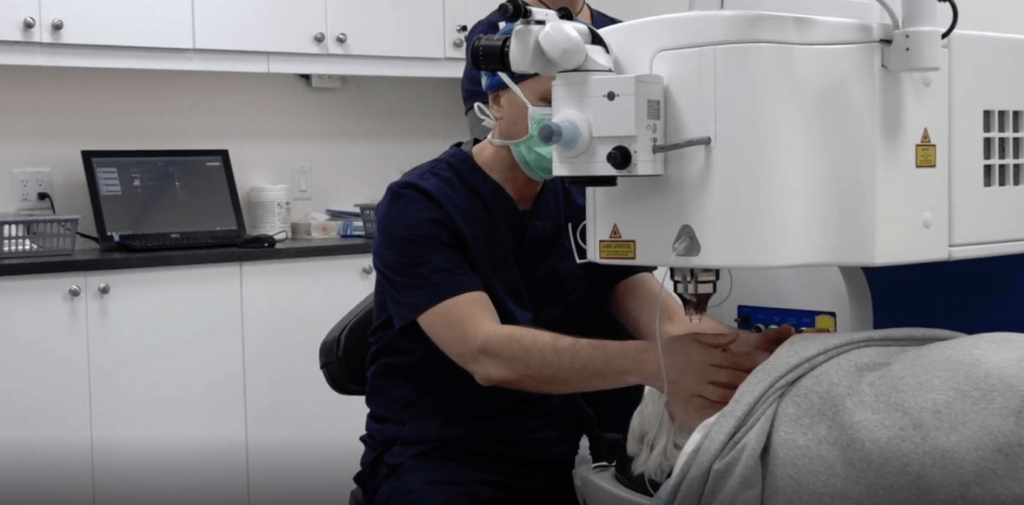Introduction
Imagine waking up one day and realizing that the world around you has lost its clarity. The morning newspaper looks blurry, faces seem shadowed, and even bright days appear dim. For millions of people, especially as they age, this isn’t just imagination—it’s daily life with cataracts.
Cataracts happen when the lens in your eye becomes cloudy, much like a fogged-up window. It doesn’t happen overnight, but slowly, colors dull, reading becomes harder, and seeing at night becomes a challenge.
The good news? There’s a safe, simple, and remarkably effective solution—cataract surgery. This 30-minute procedure has helped millions of people see clearly again, and it could do the same for you or someone you love.
Before the Surgery: What to Expect
If you’ve just been told you have cataracts, you might feel overwhelmed. That’s perfectly normal. Let me walk you through what to expect, step by step.
Your journey begins with a consultation. During this visit, an eye specialist will perform a few painless tests to understand how advanced your cataract is. You’ll be asked about your lifestyle—whether you drive, read often, or enjoy outdoor activities—because all of these help determine what kind of vision correction is best for you after surgery.
See more: Aerobika OPEP Device: Benefits for Respiratory Health
One common feeling patients express is fear—fear of surgery, fear of losing vision, or fear of the unknown. As a doctor, I hear these concerns all the time, and I want to reassure you: you’re not alone. We’ll walk with you through every stage, with kindness and clarity.
During the Surgery: A Step-by-Step Walkthrough
The day of the procedure is often easier than most expect.
You’ll arrive at the surgical center or hospital, where a friendly team will help get you settled. You’ll receive eye drops to numb the area and mild medication to help you relax. You’ll be awake—but comfortable and completely pain-free.
The surgery itself usually takes about 15 to 30 minutes. Using advanced technology, the surgeon makes a tiny opening in your eye, removes the cloudy lens, and replaces it with a clear artificial one—called an intraocular lens, or IOL.
Many patients tell me they barely remember the procedure. No stitches. No bandages. Just a gentle process that quietly and quickly restores your vision.

The Moment After: Seeing Again
Here’s the part that truly warms my heart.
The day after surgery, many patients return for a follow-up. I’ll never forget the look on one gentleman’s face—he had been living with poor vision for years. When he looked out the window and saw the sky, really saw it—he smiled and whispered, “I forgot it was this blue.”
That’s the power of restored sight. Everyday things—a grandchild’s face, a blooming flower, a crossword puzzle—suddenly feel vibrant and alive again.
It’s not an exaggeration to say that many people experience one of the most emotional moments of their lives right after cataract surgery.
Recovery: The Next Few Days to Weeks
Recovery is typically smooth and swift.
You’ll go home the same day of your procedure. Most patients wear a protective eye shield for the first night and begin using prescribed eye drops right away. These drops help prevent infection and reduce inflammation.
You’ll need to avoid heavy lifting, bending over, or rubbing your eye for a few days. But many people return to light activities within 24 to 48 hours.
Now, let’s answer a few questions I hear often:
- Can I drive soon? Many people can resume driving within a few days, once their doctor gives the green light.
- Will it hurt later? Discomfort is minimal—some describe it as a scratchy feeling or mild itchiness. Over-the-counter pain relievers are usually enough if needed.
- How long until full recovery? Vision improves rapidly, often within a day or two, but full healing takes around 4 to 6 weeks.
Patience and following your post-op care instructions will make all the difference.
Emotional Transformation: From Foggy to Free
Cataract surgery doesn’t just improve sight—it transforms lives.
Take Maria, a 72-year-old former piano teacher. She had given up her favorite hobby because reading sheet music became impossible. After her cataract surgery, she told me, with tears in her eyes, “I sat at the piano yesterday—for the first time in years—and played Mozart.”
Or Sam, a retired truck driver who was afraid to leave the house at night. A week after surgery, he joined his friends for a late dinner. “I saw the street signs again,” he beamed.
These aren’t rare cases. They’re everyday people rediscovering the joy of independence, the freedom of mobility, and the confidence of clear sight.
When the world no longer feels dim, life opens up in ways big and small.
Conclusion
If you’re facing cataracts, or watching a loved one struggle with cloudy vision, I want you to know this: help is available—and it works.
Cataract surgery is one of the safest and most life-changing procedures in modern medicine. In just 30 minutes, you—or someone you care about—can go from foggy and frustrated to clear and confident.
Talk to a vision specialist. Ask questions. Share your concerns. And most importantly, don’t let fear stand in the way of a brighter, clearer future.

